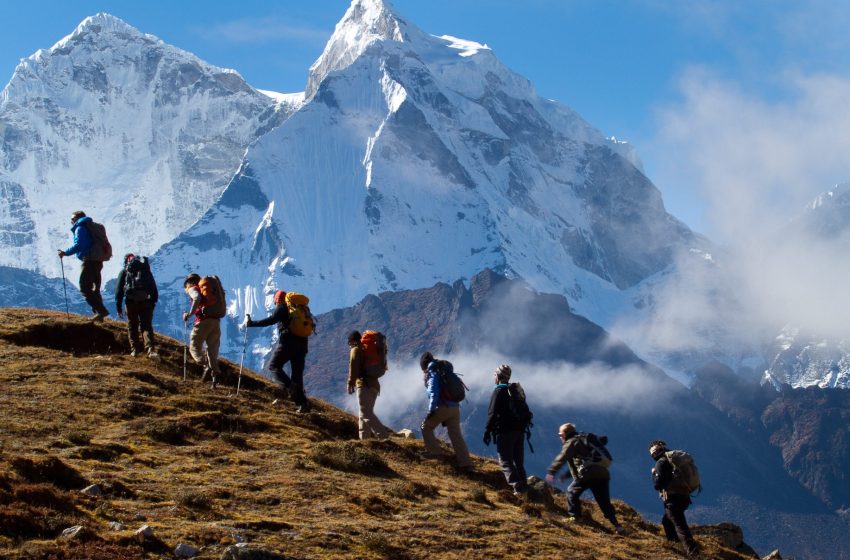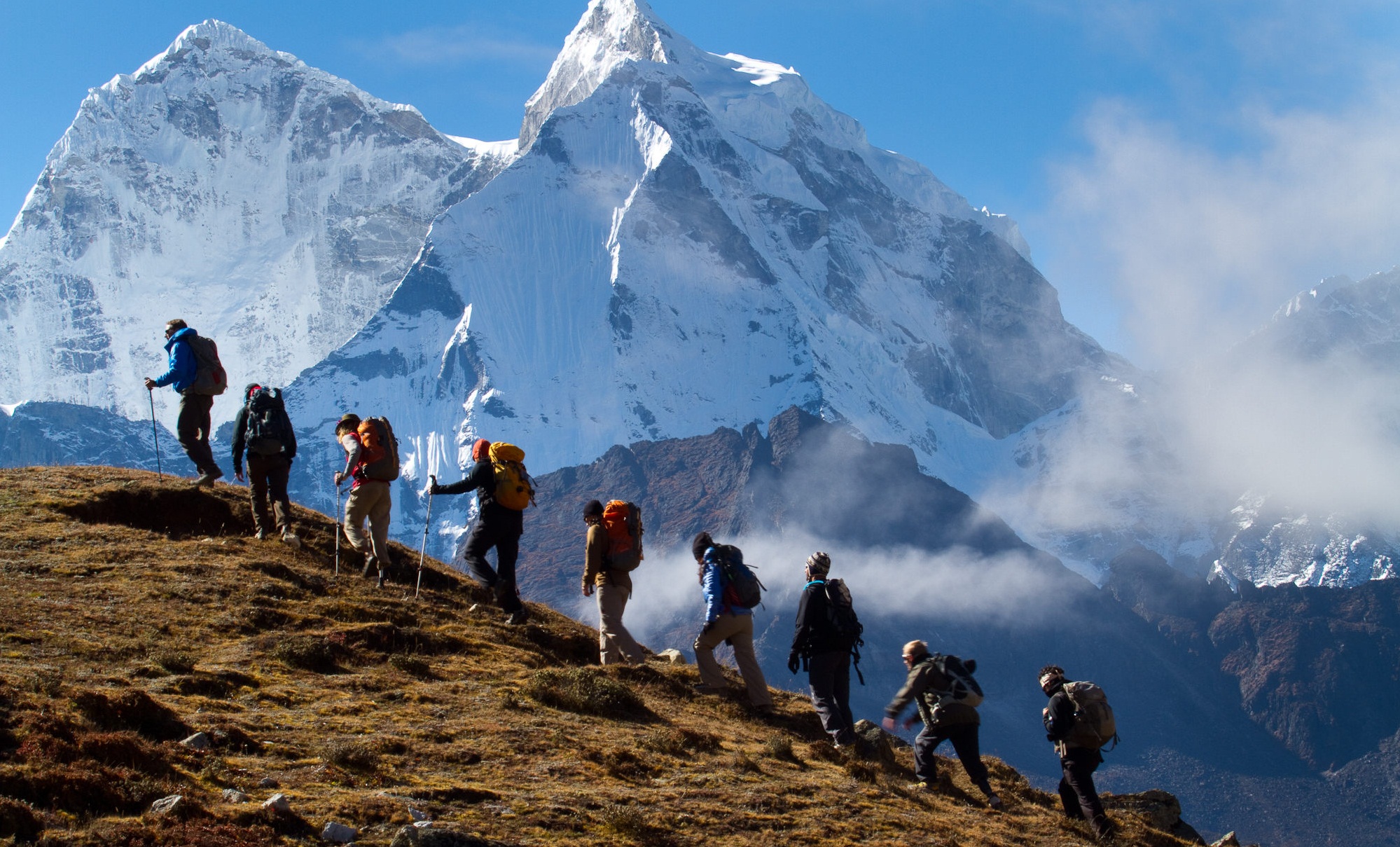Annapurna Base Camp Trek Itinerary: A Journey to the Heart of the Himalayas

The Annapurna Base Camp (ABC) trek is one of the most iconic trekking routes in Nepal, attracting adventurers from around the world. Nestled at the foot of the majestic Annapurna massif, the trek offers an incredible blend of natural beauty, cultural experience, and Himalayan adventure. With its towering peaks, lush forests, and serene villages, the Annapurna Base Camp trek promises a thrilling journey for all types of trekkers.
Here’s a comprehensive itinerary for the Annapurna Base Camp trek to help you plan your journey:
Day 1: Arrival in Kathmandu (Altitude: 1,400 m)
Your Annapurna adventure begins in Kathmandu, the vibrant capital of Nepal. Upon arrival, you’ll be transferred to your hotel, where you can rest and prepare for the trek. In the evening, there is a briefing session with the trek leader, where you’ll get an overview of the trekking itinerary, gear requirements, and safety instructions.
If time permits, you can explore some of Kathmandu’s famous heritage sites like Swayambhunath (Monkey Temple), Boudhanath Stupa, or Durbar Square.
Highlights:
- Explore Kathmandu’s cultural landmarks.
- Prepare for the trek.
Overnight stay: Kathmandu.
Day 2: Drive from Kathmandu to Pokhara (Altitude: 820 m | 6-7 hours)
On the second day, you’ll embark on a scenic drive (or flight option) to Pokhara, the gateway to the Annapurna region. The road journey takes around 6-7 hours, winding through picturesque hills, rivers, and villages. Pokhara is a beautiful lakeside city with spectacular views of the Annapurna and Dhaulagiri ranges.
Once in Pokhara, you can enjoy a leisurely evening by the tranquil Phewa Lake, soaking in the stunning mountain views.
Highlights:
- Scenic drive through the Nepalese countryside.
- Relaxing by Phewa Lake in Pokhara.
Overnight stay: Pokhara.
Day 3: Pokhara to Nayapul and Trek to Tikhedhunga (Altitude: 1,540 m | 4-5 hours trek)
The trek officially begins today! After a short drive from Pokhara to Nayapul (1.5 hours), you’ll start your trek toward Tikhedhunga. The trail follows a scenic route through charming villages, rice terraces, and waterfalls. You’ll pass by Birethanti, a bustling village at the confluence of the Modi and Bhurungdi rivers, before making your way to Tikhedhunga.
The first day of trekking is relatively easy, allowing you to ease into the rhythm of the trek.
Highlights:
- Picturesque villages and terraced fields.
- Waterfalls and river crossings.
Overnight stay: Tikhedhunga.
Day 4: Tikhedhunga to Ghorepani (Altitude: 2,870 m | 5-6 hours trek)
The trek on Day 4 is both challenging and rewarding. You’ll start with a steep ascent up a stone-paved staircase known as “Ulleri Stairs,” which consists of more than 3,000 steps! This climb can be tough, but the views of the surrounding valleys and mountains make it worthwhile.
After Ulleri, the trail gradually ascends through dense rhododendron and oak forests, eventually reaching the picturesque village of Ghorepani. Ghorepani is famous for its breathtaking views of the Annapurna and Dhaulagiri ranges.
Highlights:
- Challenging ascent through Ulleri Stairs.
- Dense rhododendron and oak forests.
- First glimpses of the Annapurna range.
Overnight stay: Ghorepani.
Day 5: Ghorepani to Poon Hill (Altitude: 3,210 m) and Trek to Tadapani (Altitude: 2,630 m | 5-6 hours trek)
An early morning hike to Poon Hill is one of the highlights of the trek. You’ll start before dawn to catch the stunning sunrise over the Himalayas. From the top of Poon Hill, you’ll witness an unforgettable panoramic view of the Annapurna and Dhaulagiri ranges bathed in golden light.
After descending back to Ghorepani for breakfast, you’ll continue your trek toward Tadapani. The trail takes you through lush forests with occasional views of the peaks.
Highlights:
- Sunrise at Poon Hill with panoramic Himalayan views.
- Forest trails through rhododendrons and oaks.
Overnight stay: Tadapani.
Day 6: Tadapani to Chhomrong (Altitude: 2,170 m | 5-6 hours trek)
The trek from Tadapani to Chhomrong offers beautiful views of the Annapurna South and Machapuchare (Fishtail) peaks. The trail descends through dense forests before reaching the Gurung village of Chhomrong, which sits at the base of the Annapurna sanctuary.
Chhomrong is a picturesque village and serves as the gateway to the Annapurna Base Camp. It’s also a great place to enjoy the local hospitality and traditional Gurung culture.
Highlights:
- Stunning views of Annapurna South and Machapuchare.
- Experience local culture in Chhomrong.
Overnight stay: Chhomrong.
Day 7: Chhomrong to Himalaya (Altitude: 2,920 m | 6-7 hours trek)
On this day, the trail descends into a lush forested valley before ascending again to reach the small settlement of Himalaya. The route passes through bamboo groves, waterfalls, and crossing several suspension bridges over the Modi River.
The terrain becomes more alpine as you gain altitude, and you’ll begin to notice the thinning vegetation as you approach the Himalayan region.
Highlights:
- Bamboo and rhododendron forests.
- Ascending into alpine terrain.
Overnight stay: Himalaya.
Day 8: Himalaya to Annapurna Base Camp (Altitude: 4,130 m | 7-8 hours trek)
This is the most exciting day of the trek as you finally reach Annapurna Base Camp! The trek takes you through Machapuchare Base Camp (3,700 m), offering incredible views of Machapuchare, Annapurna South, and Hiunchuli.
As you approach Annapurna Base Camp, the towering peaks of the Annapurna massif surround you, creating a breathtaking panorama. Upon reaching ABC, you’ll be standing at the heart of the Himalayas, surrounded by some of the world’s highest mountains.
Highlights:
- Reaching Annapurna Base Camp.
- Breathtaking 360-degree views of the Annapurna massif.
Overnight stay: Annapurna Base Camp.
Day 9: Annapurna Base Camp to Bamboo (Altitude: 2,310 m | 6-7 hours trek)
After witnessing the stunning sunrise over the Annapurna range, it’s time to begin your descent. You’ll retrace your steps back to Bamboo, descending through the same beautiful trails you came up through. The return journey is quicker but equally rewarding as you descend into warmer, greener valleys.
Highlights:
- Sunrise over the Annapurna peaks.
- Easy descent to Bamboo.
Overnight stay: Bamboo.
Day 10: Bamboo to Jhinu Danda (Altitude: 1,780 m | 5-6 hours trek)
On this day, you’ll trek back to Jhinu Danda, known for its natural hot springs. After a long day of trekking, you can relax in the hot springs near the river, a perfect way to soothe your tired muscles and unwind in nature.
Highlights:
- Soak in the natural hot springs at Jhinu Danda.
Overnight stay: Jhinu Danda.
Day 11: Jhinu Danda to Nayapul and Drive to Pokhara (5-6 hours trek | 1-hour drive)
The final day of the trek takes you from Jhinu Danda to Nayapul, where the trekking adventure officially ends. From Nayapul, you’ll take a short drive back to Pokhara, where you can celebrate the completion of your trek with a relaxing evening by Phewa Lake.
Highlights:
- Celebrate the successful trek.
- Enjoy the vibrant atmosphere of Pokhara.
Overnight stay: Pokhara.
Day 12: Drive/Fly from Pokhara to Kathmandu
After spending a relaxing night in Pokhara, you’ll either drive or fly back to Kathmandu. You can use this day to explore the remaining sights in Kathmandu, buy souvenirs, or simply unwind before your departure.
Overnight stay: Kathmandu.
Day 13: Departure from Kathmandu
With unforgettable memories of your Annapurna Base Camp trek, it’s time to bid farewell to Nepal. Depending on your flight schedule, you can spend the morning exploring more of Kathmandu before heading to the airport.
Important Tips for the Annapurna Base Camp Trek:
- Best Time to Trek: The best time to visit Annapurna Base Camp is during the spring (March to May) and autumn (September to November) seasons.
- Fitness Level: The trek is moderately challenging, and a good level of fitness is essential. Some prior trekking experience is recommended.
- Permits: You will need both the TIMS (Trekkers’ Information Management System) card and the Annapurna Conservation Area Permit (ACAP) for the trek.
- Packing: Make sure to pack appropriately for cold temperatures, especially at higher altitudes. Warm layers, trekking poles, and sturdy shoes are essential.


